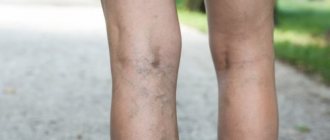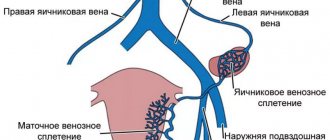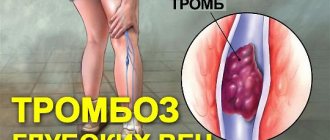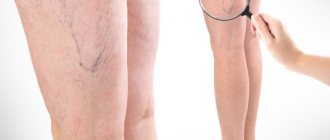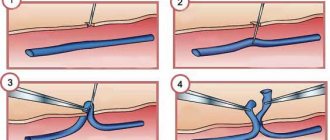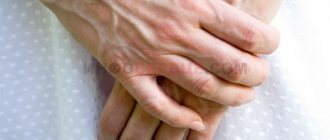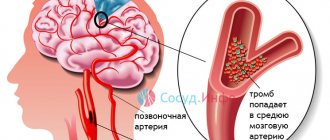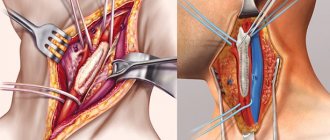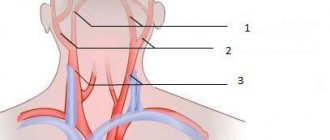Indications for surgery
Surgery removes varicose veins of the lower extremities. Treatment of varicose veins has its own specific implementation, features of rehabilitation procedures, and limitations.
In the surgical treatment of varicose veins, the professional level of the phlebologist is of great importance. It is advisable, based on patient reviews of doctors, to choose a more experienced doctor and fearlessly entrust your health to him.
Whether surgical intervention for varicose veins of the lower extremities is indicated for you or not can only be decided by a specialist who presents the clinical picture of your case based on the examination results. If there is a feeling of discomfort and inflammatory manifestations of venous disease of the lower extremities, you should immediately visit a doctor. There is no need to be afraid of the operation, because often only one such procedure can save the patient from varicose veins.
The doctor may prescribe an operation after determining the degree of varicose veins in a particular patient, if he detects damage to the saphenous veins, the presence of trophic ulcers, varicose veins of deep veins (thrombophlebitis), circulatory failure and swelling of the tissues of the lower extremities.
If a phlebologist has prescribed an operation to remove varicose veins of the lower extremities - phlebectomy, then there is no need to think twice. Pathology can cause great damage to the body.
Endovenous coagulation using laser
An operation to remove veins on the legs for varicose veins using a laser is performed when straight vessels with a diameter of at least 0.02 cm and with a small number of capillaries are affected. The procedure involves exposing damaged vessels to light waves, followed by their soldering and destruction.
Equipment
Laser coagulation of veins can be performed with any of 3 types of light guides:
| Type of light guide | Brief description of the action |
| End (classic version) | This light guide produces beam radiation from the end, that is, the vessel is sealed in front of it. The downside is the formation of hematomas and a painful feeling of tightness of the veins. The maximum diameter of the veins is 0.1 cm. |
| Radial (with elves painless radial light guide) | Light waves from the light guide form a circle that encircles the vein in diameter. This allows you to treat veins of any size. It also minimizes the risk of hematoma formation and swelling. |
| Of 3 types of radial light guides | To eliminate varicose veins, lasers with two light rings are used. The first prepares the vein for the procedure (removing excess fluid), the second circle welds the walls. For treatment, light guides are produced for thin and short veins, and for large vessels. |
The choice of equipment is made not only by the patient, but also by the treating specialist based on the condition of the blood vessels.
Which veins can be removed using EVLT?
Before choosing EVLT, a phlebologist (a specialist who examines veins and eliminates varicose veins) determines the characteristics of damaged vessels. They must be straight and have a diameter of at least 2 mm.
As a result, laser therapy can be used for the following groups of vessels:
- small and large saphenous veins;
- saphenous accessory veins, which are located at least 5 mm from the surface of the epidermis;
- vessels connecting deep veins with superficial ones.
For other veins, therapy is possible only with the use of phlebectomy.
Efficiency
Removal of veins using the EVLT method is possible using 3 types of light guides. Depending on the type of equipment, the effectiveness of treatment varies. When performing an operation using an end light guide, the effectiveness of therapy is 94-96%. Surgery with radial light guides allows you to achieve 100% results in eliminating varicose veins on the legs.
Stages of preparation and implementation
When choosing to remove varicose veins using EVLT, the patient must undergo the following preparation:
- discontinuation of hormonal medications (if they were taken). Since they can cause the development of thrombosis;
- one day before the intervention, you need to take Aspirin or cardiomagnyl to thin the blood;
- screening of damaged veins to determine the extent of their damage;
- taking tests to exclude the presence of a hidden infection or inflammatory processes in the body. Blood clotting is also determined;
- the procedure site is thoroughly washed and shaved (without the use of cosmetics, only antibacterial soap is allowed).
Before the operation begins, the boundaries of the damaged vessels, the laser/light guide insertion site, and the locations of the branching capillaries are marked. These marks allow you to seal the beginning and end of the vein, as well as the outlets of the capillaries. The process is carried out under the control of an ultrasound machine.
EVLC is performed in stages:
- Insertion of the catheter through a small puncture (the catheter insertion site is numbed with local anesthesia) in the marked area. The light guide will move along it.
- Insertion of the light guide into the catheter and its subsequent advancement to the damaged area. It is performed under ultrasound control on a monitor.
- Injection of an anesthetic to numb the vein and adjacent tissues.
- Advancement of the “active” light guide along the damaged vein with subsequent delay at the points of capillary branches (to seal the exits and prevent bleeding).
- Removing the laser, treating the puncture site with an antiseptic and applying an elastic bandage (or using compression stockings).
After completion of the procedure, the patient can leave the hospital immediately.
Features of rehabilitation
To restore the functioning of the injured limb and prevent the development of complications, it is necessary to become familiar with the nuances of rehabilitation after EVLT.
They are:
- after completion of the procedure, it is recommended to walk the operated leg in a medical facility for an hour;
- on days 2-3, ultrasound monitoring of the treated vein is performed;
- for 5 days, round-the-clock wearing of specialized underwear is required (the type of stockings is discussed with the treating specialist before the operation). Then, for 45-60 days, clothing must be used during the daytime;
- perform daily leg stretching by walking every day for 60 minutes;
- Avoid overloading your legs (prolonged sitting or standing positions) and visiting saunas or taking hot baths.
If removal of varicose veins is also required, then the procedures are allowed to be carried out no earlier than after 7 days.
Contraindications for phlebectomy
The procedure for surgical treatment of varicose veins of the lower extremities is not indicated for every patient. A list of restrictions has been established, due to which surgical intervention will be unacceptable. Let's list them:
- old age;
- late period of illness;
- the presence of infectious complications;
- ischemic necrosis;
- acute hypertensive encephalopathy.
For such cases, medicine provides for the use of other treatment methods.
Which vessels need to be operated on?
Venous outflow is carried out by the vessels of the superficial veins, deep veins and the perforating veins that communicate with them. The deep veins have a special function. A large proportion of the outflow of blood passes along the bed of their vessels. And the vessels of the superficial veins carry only a tenth of the total blood flow. The development of varicose veins affects the vessels of the saphenous veins, as a result of which surgeons, when treating varicose veins, remove precisely such veins of the lower extremities. The deep vein area is usually not operated on.
Having considered the treatment methods, you involuntarily ask the question: how is blood circulation carried out after vein removal? Experts explain the therapeutic effect by the fact that by eliminating the vessels of the saphenous veins, they stop the stagnation of blood fluid, and the circulatory system begins to work normally.
Patient preparation
A person awaiting surgery for varicose veins of the lower extremities should be prepared for a successful outcome and perform a number of mandatory actions. On the eve of the scheduled date of the operation, you need to prepare, namely:
- In the morning, wash yourself, preferably under a warm shower.
- Make the surface of the lower extremities smooth. There is no need to use cosmetic depilatory products; it is better to just shave your legs. Hair will make it difficult for a phlebologist to treat varicose veins.
- Don't be late for the clinic. You need to arrive for the operation a little earlier than the scheduled time. This will make it possible to comply with all the necessary manipulations in preparation for the operation.
- If the operation is performed under general anesthesia, in the evening the patient's intestines are cleansed with an enema.
- It is worth reporting in advance if you have an allergic reaction to specific medications. This will help avoid unexpected complications. Usually the doctor warns in advance that the operation is carried out with the preliminary administration of novocaine, as well as products that include an iodine component.
Sometimes there is a need for additional inpatient monitoring of the patient. In this case, the patient must inform the surgeon the name of the medications he uses regularly.
Types of operations
Treatment of varicose veins of the lower extremities is carried out using various surgical methods.
Phlebectomy
The operation to remove the saphenous veins takes place within two hours. When the subcutaneous vessels are removed, their functions extend to the deep veins. During the operation, incisions are made in the inner thigh and the varicose vein is removed through them. For a speedy recovery, the patient is prescribed venotonic drugs.
A significant disadvantage of this procedure is the high risk of scarring, but recently techniques have emerged that allow plastic surgery on the valves of the saphenous vein without removing it. Only a few specialists know such techniques, since this operation is quite difficult to perform and requires high professionalism and extensive experience as a doctor.
Miniphlebectomy
The operation allows you to maintain a more attractive appearance of the skin than phlebectomy. The surgeon makes pinpoint punctures, the holes of which allow the affected veins to be removed. The visible result of the doctor’s work is small scars, which subsequently heal.
Combined phlebectomy
The operation can also be performed on an outpatient basis using local anesthesia. This procedure is called combined phlebectomy. It is characterized by the removal of varicose veins with special probes. After some time, the scars heal, and the return of the disease is unlikely.
Stripping
It is considered a type of surgical treatment of the great saphenous vein. Stripping allows you to remove the great saphenous vein along with its tributaries by making an incision in the inguinal groove area. Partial stripping allows you to remove the affected vein using a thin probe. Total stripping completely removes the vessel of the great saphenous vein. Incompetent perforating veins of the lower extremities are ligated. The operated area of the legs is subjected to pressure from a tight bandage.
Laser operations
Modern surgery uses two types of laser operations in the treatment of varicose veins of the lower extremities. The first treatment method is endovasal laser coagulation of varicose veins. It is characterized by coagulation of a venous vessel under the influence of a thermal energy flow of a laser. The second method of percutaneous laser coagulation is known for the treatment of venous vessels. This is how the vascular network of varicose veins is treated.
Advantages of each method
Surgery to remove leg veins for varicose veins, depending on the type of intervention, has the following advantages:
| Phlebectomy | EVLC |
| The incisions for the operation are about 5 mm, so there are practically no scars left | No pain during the procedure (local anesthesia is used). No general anesthesia is required |
| Painless, as the operation is performed under local anesthesia. For miniphlebectomy, local anesthesia is used. | EVLT is performed under ultrasound guidance. The result is high precision and efficiency. |
| Low cost | Hematomas and pain at the surgical site occur rarely or are mild. |
| Rapid restoration of skin tone (absence of stars and purplish-bluish tint of the epidermis) | The operation requires 1 puncture, so no stitches are required and there are no scars |
| Short recovery period of about 30 days | Recovery period up to 5 days |
| Effective for all forms of varicose veins | After the operation, the patient can leave the clinic within 1 hour. |
| Return to normal lifestyle is possible after 24 hours. | |
| EVLT can be performed when the integrity of the epidermis is damaged by ulcers. | |
| The duration of the surgical intervention is no more than 40 minutes. | |
| EVLT can be performed on both legs on the same day. On one leg, repeat surgery is acceptable after 7 days. |
The risk of infection during the procedures is minimal, since the incision/puncture is small.
Which surgery is better?
The appropriateness of using any method of surgical intervention is determined by the doctor. Only a doctor will be able to assess the extent of the disease and accompanying pathological disorders. As a rule, minor nodes are neutralized by more gentle surgical intervention. Extensive lesions of varicose veins require radical measures of traditional surgery.
The consequence of surgical incisions and punctures will be unsightly wounds of the skin, requiring a long rehabilitation period. Therefore, a timely visit to the doctor will allow you to localize the disease using less traumatic methods and avoid negative consequences.
Possible consequences
Complications may occur after the operation. Their presence will be due to various reasons, from the condition of the blood vessels to the regenerating features of the skin. Such signs are individual and cannot be common to any specific group of patients. The professional experience of phlebologists has made it possible to track frequent complications resulting from operations for varicose veins of the legs:
- Blood coagulation in a venous vessel with reduction of the blood lumen (thromboembolism). The situation can be prevented by limiting the time the patient spends at rest and timely return to activity and movement.
- Bleeding. Blood usually oozes out during dressing procedures. This phenomenon is not dangerous.
- Bruising. Characterized by the formation of bruises that heal within two weeks.
- Painful sensations. Postoperative painful manifestations are an accompanying element of recovery. Normally, pain symptoms last for several days, gradually subsiding.
- Increased body temperature. The phenomenon is short-term and represents a natural reaction to protein coagulation.
Thus, the bulk of possible postoperative ailments are temporary and do not pose a threat. You should pay more attention to even the first sign, because it may later cause the need for the next operation.
Diet
During the postoperative period, blood thinning products are included in the menu. These include:
- healthy fats – flaxseed and olive oil, fatty fish;
- berries containing substances similar to aspirin (raspberries, currants, cherries, cranberries);
- citrus fruit;
- tomatoes and juice from them;
- bitter chocolate;
- sunflower seeds;
- beet.
It is also useful to add foods containing magnesium to your diet. This is oatmeal, ginger. Magnesium prevents the formation of blood clots. It is important to monitor your drinking regime to prevent blood thickening.
Rehabilitation period
The postoperative period causes relapses only in isolated cases. Maintaining future foot health depends largely on the patient. To avoid bruising, bleeding and other unforeseen deviations, you must strictly follow the recommendations of the operating doctor.
Basic postoperative requirements:
- Diversify your usual vacation.
- Make street walks regular.
- Perform physical health exercises selected by a specialist.
- Stick to the correct schedule and menu.
- Bandage your feet with fabrics with elastic properties.
- Use compression stockings in your daily wardrobe.
- Avoid heavy lifting.
- Control body weight.
In addition, there are other mandatory actions:
- For two days after surgery, avoid drinking alcoholic beverages, visiting a hot bath, or driving a car.
- Massage of the lower extremities during the first four days will help avoid pain accompanied by fever. In general, activity and mobility will help to quickly normalize blood flow, as well as increase the tone of the walls of blood vessels in the lower extremities.
- To prevent blood clots, a phlebologist can prescribe blood-thinning drugs. This assignment should not be ignored.
- Prevention of the inflammatory process can be ensured by the use of antibiotics. When talking with your doctor, you should immediately name any contraindications you have to certain components of the medications.
- It is forbidden to wet postoperative sutures before they are removed. Sutures are usually removed on the seventh day after surgery, making sure that the incision has healed.
- After removing the threads from the wound, it is recommended to use water procedures carefully, avoiding hard washcloths and sponges. It is recommended to wash your foot with a soft cloth soaked in an alkali-free soap solution. After washing, you need to let the wound dry and carefully treat it with brilliant green. For 30 days, you should not use a bath broom in the area of scars, or steam your legs in the basin.
Removal of varicose veins in 3 hours, results for life!
Treatment results for our patients
Disease: varicose veins
Treatment method: EVLT + MINIFLEBECTOMY
Combined treatment of varicose veins. Endovasal laser obliteration of the vein on the left leg (EVL) + Miniphlebectomy
Disease: varicose veins
Treatment method: EVLT + MINIFLEBECTOMY
Laser treatment (EVLT) followed by miniphlebectomy of the tributaries of the great saphenous vein on the thigh and shin of the right leg. Miniphlebectomy of varicose veins.
Disease: Telangiectasia
Treatment method: Foam sclerotherapy
To remove the stars, the patient underwent a session of microfoam sclerotherapy (Foam-Form) of the reticular veins under the control of laser transillumination.
Disease: varicose veins
Treatment method: EVLT + MINIFLEBECTOMY
Upon examination of the patient, varicose veins were diagnosed on the right leg. Combined treatment with EVLT + miniphlebectomy was performed.
Rehabilitation after surgery
Despite the fact that miniphlebectomy and laser EVLT are short, painless operations, the body will still need time to recover after them. At the First Phlebological Center, the rehabilitation period includes:
- first dressing the next day after surgery;
- second dressing two to three days later;
- two weeks after the second operation - examination by the attending physician;
- six months of observation by a phlebologist (free of charge) if necessary.
The recovery period will require the patient to follow a number of important recommendations in everyday life:
- do not lift heavy objects;
- exclude physical activity;
- Take short walks every day;
- perform a set of therapeutic exercises;
- exclude fatty, spicy, salty foods, and alcohol from the diet;
- stop smoking;
- monitor your weight;
- eat more vegetables and fruits, especially those containing vitamin C;
- In the first two months, be sure to wear compression stockings or a special bandage.
In addition, we recommend subsequently visiting a phlebologist or vascular surgeon annually for preventive purposes.
You can make an appointment with a phlebologist at the First Phlebological Center in Moscow online or by calling the numbers listed at the top of the page. Be healthy!
Nutrition after surgery
Proper balanced nutrition helps strengthen blood vessels during the rehabilitation period. It requires a number of restrictions, but overall it will not become painful and unbearable, like some diets.
Recommended:
- Use diluted apple cider vinegar daily: 3 dessert spoons of vinegar in half a glass of boiled, chilled water.
- Love salads flavored with vegetable oil and representing a combination of the following vegetables: sweet peppers, tomatoes, carrots, any greens. You can eat vegetables as usual.
- Drink 1 glass of freshly squeezed juice daily based on gooseberries, citrus fruits, black currants, and apples.
- Start your morning by consuming cereals in cereals or porridges.
- It is necessary to include seafood in your diet. It doesn’t matter what kind of food you eat - mussels or seaweed. You can choose products yourself, based on your financial capabilities.
Only proper and balanced nutrition will help you recover faster after saphenous vein surgery.
Medicines
The purpose of prescribing medications is:
- pain relief;
- improved blood circulation;
- prevention of thrombosis;
- getting rid of postoperative bruises and seals.
Venotonics are used - Phlebodia, Venarus, Detralex, for a period of 14 days or more. Phlebotropic agents improve the elasticity of the venous wall, restore microcirculation, reduce the permeability of blood vessels, and have an anti-inflammatory effect.
To prevent the formation of blood clots, anticoagulants and antiplatelet agents are used. Anticoagulants prevent platelets from sticking together, thin the blood, make it more fluid, dilate blood vessels, and improve microcirculation. Medicines based on pentoxifylline (Radomin, Agapurin, Trental) and aspirin are used.
A combination of antiplatelet agents with pentoxifylline and phlebotonics is effective. Vitamins, antioxidants, enzyme preparations, and anti-inflammatory drugs are used as additional therapy.
The doctor will write out a regimen for taking this or that medication, indicate the dosage and duration of the course. Treatment is selected individually for each patient.

